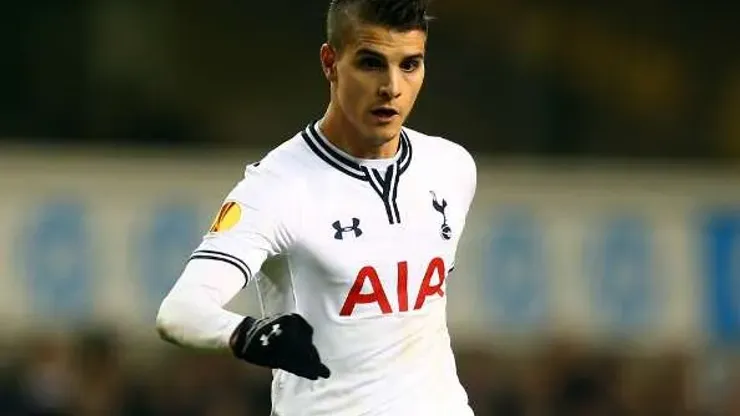We are just four matches into the Premier League season, so the words sample size must be kept in mind, but Erik Lamela has been a revelation for Maurice Pochettino’s men so far. After a lost season last year under the bumbling management of Andre Villa-Boas and Tim Sherwood, in addition to a difficult transition to England and flagging health, the future was not looking bright for Lamela, who was supposed to be the biggest and brightest of the players purchased with the Gareth Bale windfall. That has all changed with his series of breathtaking performances that have the Spurs eyeing the all-important fourth position in the table.
As much as the reasons mentioned earlier played a vital role in his emergence, the actual reason behind his resurgence is that Pochettino has been deploying him correctly in a midfield position behind Emmanuel Adebayor, a true striker. Neither Sherwood nor Villas-Boas knew how to use Lamela correctly, or if they did they tried to force him into their vision of the team nonetheless. His inability to acclimate to England and his health issues became more prominent because of his misuse, which only complicated the central problem: His managers continually tried to fit a square peg in a round hole.
Should Lamela’s resurgence continue, Pochettino deserves a great deal of the credit for turning him into a star. In Saturday’s ultimately star-crossed match at Sunderland, Pochettino went with a fairly straightforward 4-2-3-1 lineup. By pairing Lamela with Christian Eriksen and Nacer Chadli, Pochettino freed Lamela to do what he does best: Use his masterful on-ball skills to set up his fellow offensive threats. Lamela is not comfortable playing up front; he is best when he is allowed him to establish himself in the middle of the field. Chadli, Eriksen and Adebayor allow him to do exactly that.
Throughout Saturday’s match, we repeatedly saw him dispossess opposing players and scoop up loose balls. This is what he does best, and this is what he is able to do when focusing more on setting up his teammates, rather than creating opportunities for himself. He displayed a previously unseen aggression near the ball, and once he had possession, no one on the field was able to take it away from him. His deft footwork was a huge reason why Tottenham racked up an impressive 68% of possession and, by extension; it was vital in creating their two goals.
Lamela’s game is not quite perfect, of course. While he is at his best in the midfield, we still need to see him apply a little more tact and touch downfield. The majority of his passes near the net ended on the feet of Black Cats, as Lamela was over-aggressive at times and potentially cost the Spurs possession once or twice. Obviously, any player is going to see the success rate of their passing decrease in their opponents third, but given how magnificent Lamela was in the middle, it is not unreasonable to expect a little more in higher pressure opportunities.
As far as flaws go, however, that is but a blemish on what was otherwise a remarkable match for Lamela. While many Spurs have flourished under Pochettino, no player’s success has been as significant or as gratifying as Lamela’s. By far the most expensive of last year’s acquisitions, the expectations were reasonably high for Lamela around White Hart Lane. His coronation may have been delayed a year, but it looks like he has finally arrived. With a little added luck and focus, it is quite possible that Tottenham Hotspur have arrived as well.
200+ Channels With Sports & News
- Starting price: $33/mo. for fubo Latino Package
- Watch Premier League, Women’s World Cup, Euro 2024 & Gold Cup
The New Home of MLS
- Price: $14.99/mo. for MLS Season Pass
- Watch every MLS game including playoffs & Leagues Cup
Many Sports & ESPN Originals
- Price: $10.99/mo. (or get ESPN+, Hulu & Disney+ for $14.99/mo.)
- Features Bundesliga, LaLiga, Championship, & FA Cup
2,000+ soccer games per year
- Price: $5.99/mo
- Features Champions League, Serie A, Europa League & Brasileirāo
175 Premier League Games & PL TV
- Starting price: $5.99/mo. for Peacock Premium
- Watch 175 exclusive EPL games per season






